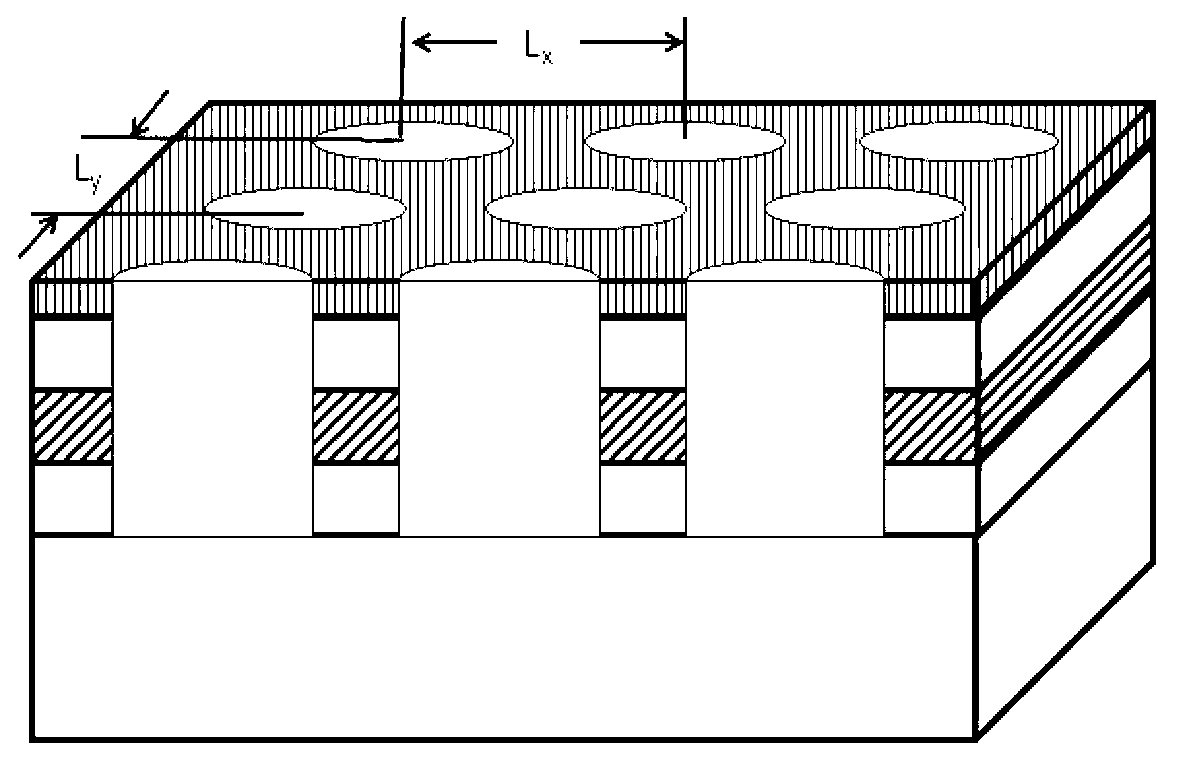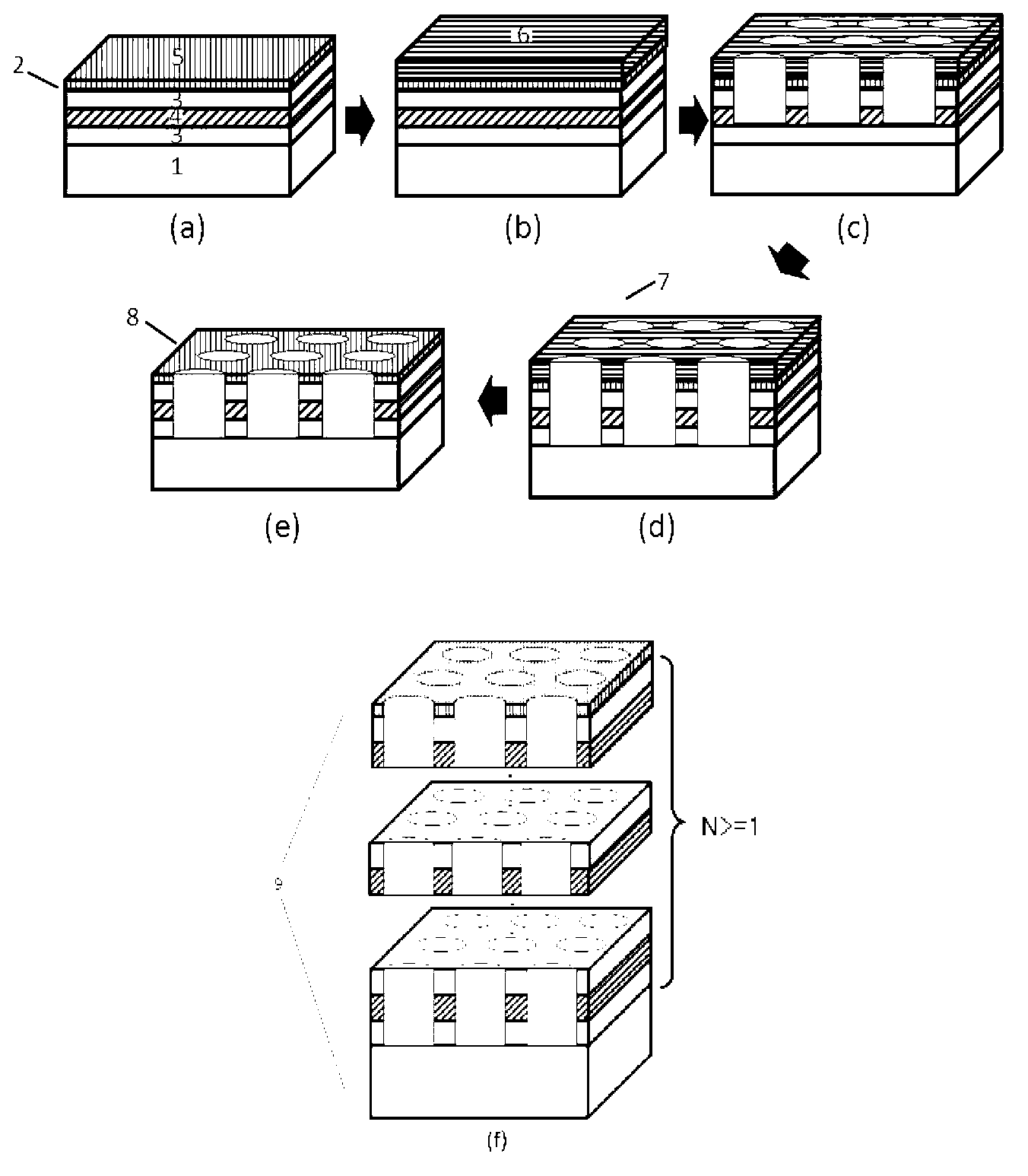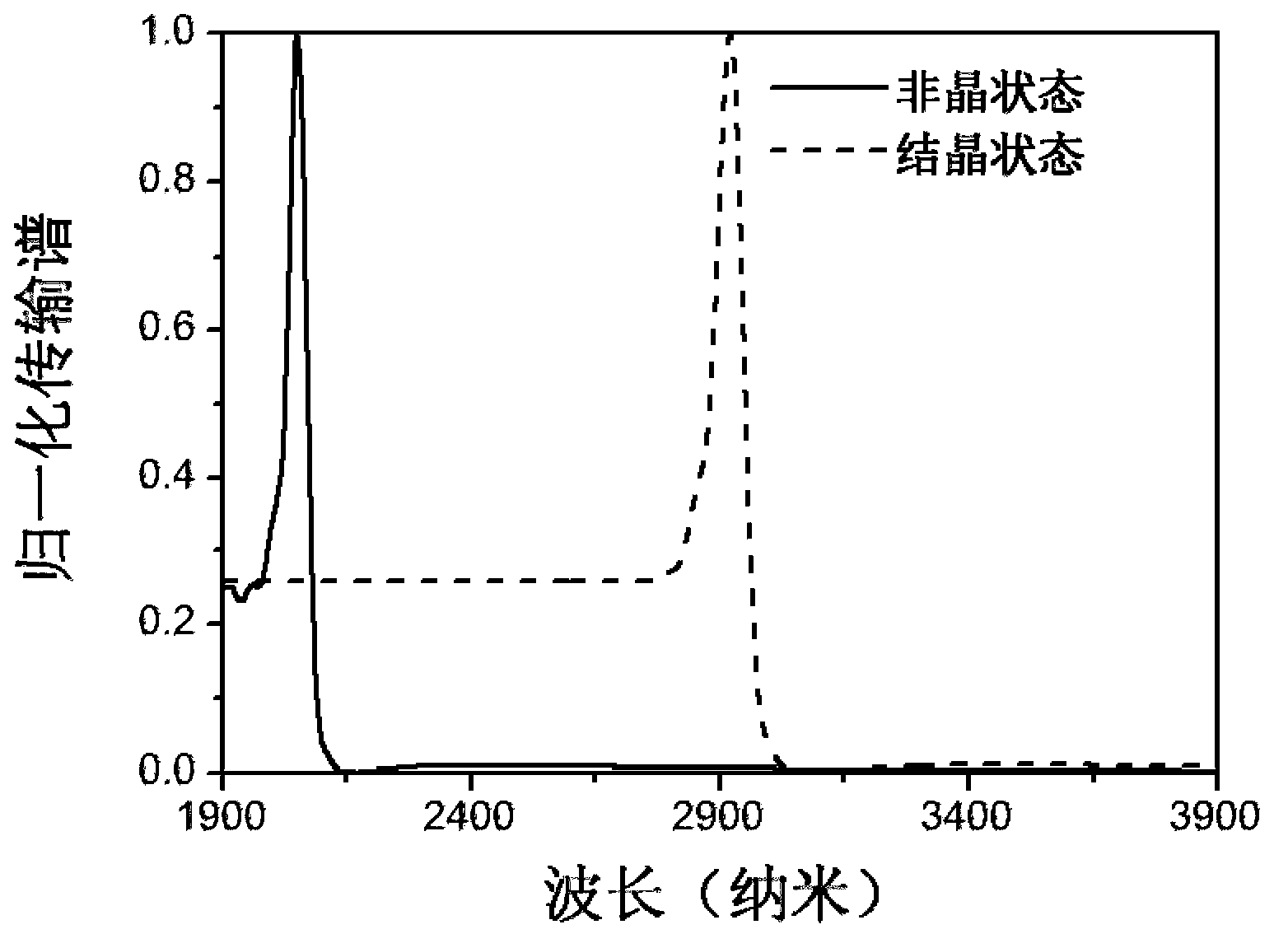Multilayer symmetric metamaterial based on phase-change material or topological insulating material
A technology of topological insulation and phase change materials, applied in electrical components, antennas and other directions, can solve the problems of complex tuning devices, difficult to apply tuning methods, increasing the complexity of metamaterial structure design and the difficulty of preparation process, etc.
- Summary
- Abstract
- Description
- Claims
- Application Information
AI Technical Summary
Problems solved by technology
Method used
Image
Examples
example 1
[0018] First, an N (N>=1) layer multilayer structure (metal layer 3-phase change material or topological insulating material layer 4-metal layer 3-oxidation layer 5) 2 is formed on the glass substrate 1 by a material growth process, such as attached figure 2 (a) shown.
[0019] Second, deposit SiO on the multilayer structure 2 2 film as a mask 6, as attached figure 2 (b) shown.
[0020] Then, the designed resonant cell array is transferred to the mask through the mask process, as shown in the attached figure 2 (c) shown. Among them, the structure design can adopt algorithms such as finite time domain difference method and finite element method.
[0021] Then, through an etching process, a resonant unit array 7 is prepared on the 2 material, and the resonant unit array is arranged in a rectangular lattice (that is, on the surface of the metamaterial, the horizontal period length L of the resonant unit x and vertical cycle length L y unequal) simultaneously penetrate t...
PUM
 Login to View More
Login to View More Abstract
Description
Claims
Application Information
 Login to View More
Login to View More - R&D
- Intellectual Property
- Life Sciences
- Materials
- Tech Scout
- Unparalleled Data Quality
- Higher Quality Content
- 60% Fewer Hallucinations
Browse by: Latest US Patents, China's latest patents, Technical Efficacy Thesaurus, Application Domain, Technology Topic, Popular Technical Reports.
© 2025 PatSnap. All rights reserved.Legal|Privacy policy|Modern Slavery Act Transparency Statement|Sitemap|About US| Contact US: help@patsnap.com



